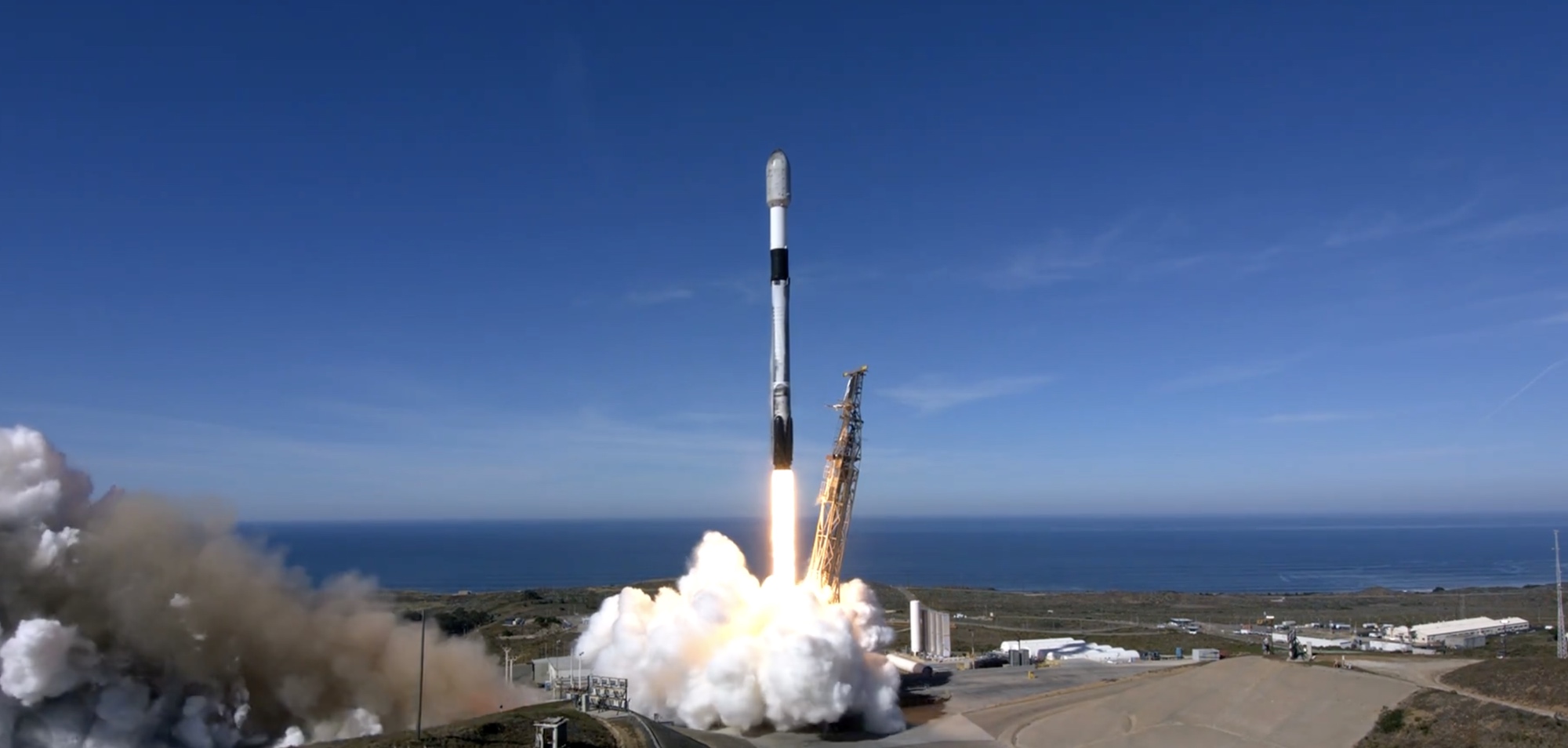WASHINGTON — SpaceX launched more than 100 satellites in the ninth in a series of dedicated smallsat rideshare missions Nov. 11, the latest flight in a program that has generated both delight and disdain across the commercial space industry.
A Falcon 9 lifted off from Vandenberg Space Force Base in California at 1:49 p.m. Eastern on the Transporter-9 mission. The booster, which previously launched 11 missions including Transporter-8 in June, landed back at the launch site seven and a half minutes after liftoff.
Transporter-9 carried 90 payloads deployed over the course of half an hour, starting about 55 minutes after liftoff, although confirmations of a successful deployment were initially missing for several of the satellites. Those payloads included several orbital transfer vehicles that will later deploy their satellites, bringing the total satellites on the launch to more than 110.
The customer with the most payloads on Transporter-9 was Planet. The company had 36 of its Dove imaging cubesats, collectively called Flock 4Q, on the launch. It also flew Pelican-1, a tech demo satellite for its future Pelican and Tanager high-resolution and hyperspectral imaging satellites.
Other satellite constellation operators that flew satellites on Transporter-9 include Spire, which operates a constellation to collect weather and vessel tracking data, as well as synthetic aperture radar imaging companies Iceye and Umbra. Spire’s set of satellites included three satellites for GHGSat to monitor greenhouse gas satellites, one of which is the first commercial satellite for tracking carbon dioxide emissions.
Among the newcomers on the launch was Foxconn, the Taiwanese electronics manufacturer best known for producing consumer electronics devices like Apple’s iPhone. The company, also known as Hon Hai Technology Group, included its first two cubesats, Pearl-1H and Pearl-1C, on the mission. Those spacecraft are “a pilot run as proof of the concept for our efforts in LEO satellite broadband communications and next-gen, beyond 5G capabilities,” said Jen-Ming Wu of the Hon Hai Research Institute in a Nov. 6 statement.
The two Foxconn satellites are among nearly three dozen manifested on the launch by Exolaunch, one of several rideshare brokers flying payloads on the mission. Others include Maverick Space Systems, SEOPS and Momentus, which included five satellites on the mission but without one of its Vigoride tugs.
D-Orbit, another major user of Transporter missions, flew another of its ION tugs on Transporter-9. Two new orbital transfer vehicle developers, Exotrail and Impulse Space, flew their first tugs, spacevan-001 and Impulse-1, on the mission.
The Transporter missions have elicited strong reactions across the commercial space industry. Satellite operators and rideshare launch brokers have hailed them for providing regular and low-cost space access, particularly when there are limited options from other launch providers.
“I can’t understate what a critical part of the NewSpace industry Transporter missions are,” remarked Todd Master, chief operating officer of Umbra, on social media. “There are entire businesses that are enabled by this that could not have existed 5 years ago.”
Developers of small launch vehicles, though, have argued Transporter missions undercut their business models by offering launch services at much lower per-kilogram costs than their vehicles. Some have gone so far as to accuse SpaceX of predatory pricing, claiming the company is offering Transporter launch services below its costs.
“They are, little by little, taking over what the small launch vehicles are able to accomplish,” said Curt Blake, former chief executive of launch services company Spaceflight who now leads the commercial space group at law firm Wilson Sonsini, during the Satellite Innovation conference last month in Mountain View, California. Small launch vehicles can still fill some niches, he argued, “but you have to think of it as a threat.”
SpaceX continues to see strong demand for its Transporter services. The company’s online booking system shows the earliest opportunity for a launch to sun-synchronous orbit on its Transporter missions to be in October 2025. The company announced in August a new line of rideshare missions to mid-inclination orbits, called Bandwagon, starting in 2024. The earliest available opportunity for the Bandwagon missions is November 2024.
Related

Dr. Thomas Hughes is a UK-based scientist and science communicator who makes complex topics accessible to readers. His articles explore breakthroughs in various scientific disciplines, from space exploration to cutting-edge research.








